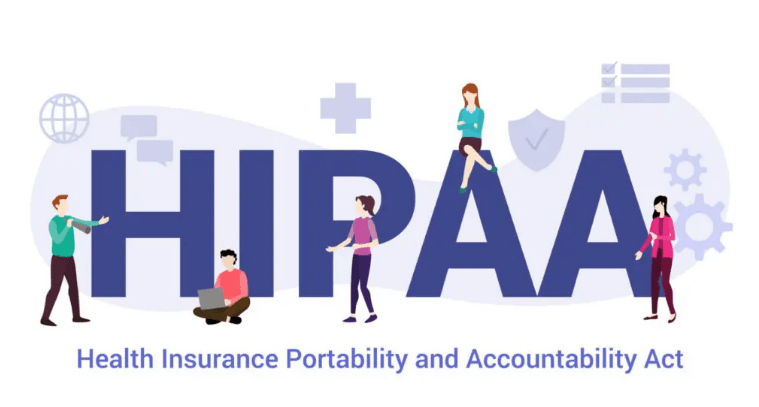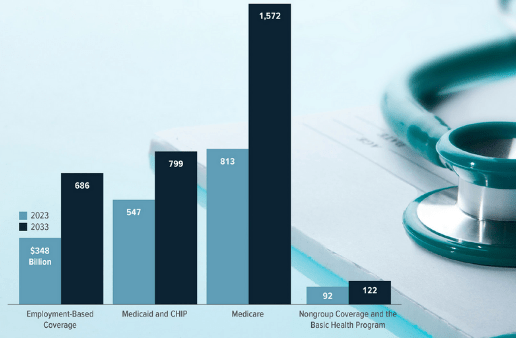Health insurance is an essential component of modern life in the United States, playing a crucial role in ensuring that individuals and families have access to necessary healthcare services. In a country where healthcare costs are high and can pose significant financial risks, health insurance is not just a luxury—it is a fundamental necessity. This article explores the importance of health insurance in the U.S., the different types of health insurance available, the challenges faced in providing coverage, and the ongoing efforts to make health insurance more accessible and affordable for all Americans.
The Importance of Health Insurance
Health insurance provides individuals with a financial safety net against the high costs of medical care. Without insurance, a single medical emergency, hospital stay, or chronic illness can result in substantial out-of-pocket expenses, leading to financial hardship or even bankruptcy. Health insurance not only helps cover the costs of medical care but also promotes regular health check-ups, preventive care, and early detection of illnesses, which are critical for maintaining good health and managing healthcare costs.
- Financial Protection: One of the primary reasons health insurance is necessary is the financial protection it offers. Healthcare expenses in the U.S. are among the highest in the world, with the average cost of a hospital stay exceeding $10,000. Health insurance helps mitigate these costs by covering a significant portion of medical bills, reducing the financial burden on individuals and families.
- Access to Healthcare: Health insurance provides access to a network of healthcare providers, including doctors, specialists, hospitals, and clinics. Insured individuals are more likely to receive timely medical care, have regular check-ups, and receive preventive services, such as vaccinations and screenings. This access to care improves health outcomes and reduces the risk of serious illnesses.
- Improved Health Outcomes: Health insurance promotes regular access to healthcare services, which can lead to better health outcomes. Insured individuals are more likely to receive early diagnosis and treatment for illnesses, reducing the likelihood of complications and the need for costly emergency care. Preventive care, such as cancer screenings and immunizations, helps identify health issues early, leading to more effective treatment and improved survival rates.
- Peace of Mind: Having health insurance provides peace of mind, knowing that one is covered in the event of a medical emergency or health crisis. This sense of security allows individuals to focus on their health and well-being without the constant worry of how they will afford medical care.

Types of Health Insurance in the USA
The U.S. healthcare system offers a variety of health insurance options to meet the diverse needs of the population. These options include employer-sponsored insurance, government programs, and individual market plans. Understanding the different types of health insurance is essential for making informed decisions about coverage.
- Employer-Sponsored Insurance (ESI): Employer-sponsored health insurance is the most common form of coverage in the United States, providing insurance to over half of the non-elderly population. Employers typically offer health insurance as a benefit to their employees, with the employer and employee sharing the cost of premiums. ESI plans vary in terms of coverage, network providers, and cost-sharing arrangements, such as deductibles, co-pays, and co-insurance.
- Medicare: Medicare is a federal health insurance program for individuals aged 65 and older, as well as for certain younger individuals with disabilities. Medicare is divided into four parts: Part A (hospital insurance), Part B (medical insurance), Part C (Medicare Advantage plans), and Part D (prescription drug coverage). Medicare provides comprehensive coverage for hospital care, medical services, and prescription drugs, helping to ensure that seniors have access to necessary healthcare.
- Medicaid: Medicaid is a joint federal and state program that provides health coverage to low-income individuals and families, including children, pregnant women, and people with disabilities. Medicaid covers a wide range of services, including hospital care, physician services, long-term care, and preventive services. Medicaid eligibility and benefits vary by state, and the program is a critical safety net for vulnerable populations.
- The Children’s Health Insurance Program (CHIP): CHIP provides health coverage to children in low-income families who do not qualify for Medicaid but cannot afford private insurance. CHIP covers essential health services for children, including doctor visits, vaccinations, dental care, and emergency services. Like Medicaid, CHIP is jointly funded by the federal government and states, with states having flexibility in program design and administration.
- Individual and Family Plans: Individuals who do not have access to employer-sponsored insurance or government programs can purchase health insurance through the individual market. The Affordable Care Act (ACA) established health insurance marketplaces, also known as exchanges, where individuals and families can compare and purchase insurance plans. The marketplaces offer a range of plans with different levels of coverage, and individuals may qualify for subsidies to help reduce the cost of premiums.
- Catastrophic Health Insurance: Catastrophic health insurance plans are designed for individuals under the age of 30 or those with a hardship or affordability exemption. These plans have low premiums and high deductibles, providing coverage for essential health benefits after the deductible is met. Catastrophic plans are intended to protect against significant medical expenses, such as hospitalization or surgery, rather than covering routine care.
Challenges in Health Insurance Coverage
Despite the availability of various health insurance options, millions of Americans remain uninsured or underinsured. Several challenges contribute to gaps in coverage and access to care:
- High Costs of Health Insurance: The cost of health insurance premiums, deductibles, and co-pays can be prohibitive for many individuals and families, particularly those with lower incomes or those who do not qualify for subsidies. High healthcare costs can lead to individuals forgoing insurance or choosing plans with limited coverage, leaving them vulnerable to financial risk.
- Limited Access to Employer-Sponsored Insurance: While employer-sponsored insurance is a common form of coverage, not all workers have access to it. Part-time, temporary, and gig workers often do not receive health benefits from their employers. Small businesses may also struggle to offer health insurance due to cost constraints, leaving many employees without access to employer-sponsored plans.
- Complexity of the Health Insurance System: The U.S. health insurance system is complex, with a wide range of plan options, coverage levels, and cost-sharing arrangements. Navigating the system can be challenging for individuals, leading to confusion and difficulty in selecting the right plan. Understanding insurance terms, such as deductibles, premiums, and networks, is essential for making informed decisions, but many individuals lack the knowledge or resources to do so.
- Medicaid Expansion Gaps: While the ACA expanded Medicaid eligibility to cover more low-income individuals, not all states have adopted the expansion. As a result, there are coverage gaps in states that have not expanded Medicaid, leaving some low-income adults without access to affordable health insurance. These coverage gaps disproportionately affect minority populations and contribute to health disparities.
- Underinsurance and Coverage Limitations: Even individuals with health insurance may face challenges due to underinsurance, where their plan does not provide adequate coverage for necessary services. High deductibles, limited provider networks, and exclusions for certain treatments can result in significant out-of-pocket costs and barriers to care. Underinsured individuals may delay or avoid seeking medical treatment, leading to worse health outcomes.

Efforts to Improve Health Insurance Coverage
Recognizing the importance of health insurance, policymakers, healthcare providers, and advocacy groups have worked to improve access to coverage and reduce the number of uninsured Americans. Several key initiatives and reforms have been implemented to address the challenges in health insurance:
- The Affordable Care Act (ACA): The ACA, enacted in 2010, was a landmark reform aimed at expanding access to health insurance, reducing costs, and improving the quality of care. Key provisions of the ACA include the establishment of health insurance marketplaces, the expansion of Medicaid, the requirement for insurers to cover pre-existing conditions, and the provision of subsidies to help individuals afford insurance. The ACA significantly reduced the number of uninsured Americans and improved access to healthcare for millions.
- Medicaid Expansion: The expansion of Medicaid under the ACA extended coverage to millions of low-income individuals who were previously ineligible. Medicaid expansion has been shown to improve access to care, increase preventive services, and reduce disparities in health outcomes. Efforts continue to encourage more states to adopt Medicaid expansion to close coverage gaps and provide healthcare to underserved populations.
- Subsidies and Premium Assistance: The ACA introduced subsidies to help individuals and families afford health insurance through the marketplaces. These subsidies are based on income and are designed to make coverage more affordable for low- and middle-income individuals. Premium assistance programs have been essential in reducing the financial burden of health insurance and increasing enrollment in marketplace plans.
- Public Option and Medicare for All Proposals: Some policymakers and advocacy groups have proposed the creation of a public health insurance option or a single-payer system, such as Medicare for All, to expand access to coverage and reduce costs. A public option would provide an alternative to private insurance, allowing individuals to choose a government-run plan. Medicare for All would extend Medicare coverage to all Americans, creating a universal, publicly funded healthcare system. These proposals aim to address the gaps and inefficiencies in the current system and ensure that all individuals have access to affordable health insurance.
- Health Insurance Literacy and Education: Improving health insurance literacy and education is essential for helping individuals navigate the complex health insurance system. Initiatives to provide clear information, resources, and assistance can empower individuals to make informed decisions about their health insurance options. Healthcare navigators, community organizations, and online tools can play a vital role in educating consumers and facilitating enrollment in health insurance plans.
The Future of Health Insurance in the USA
The future of health insurance in the United States will be shaped by ongoing policy debates, economic factors, and changing healthcare needs. Several key trends and considerations will influence the direction of health insurance:
- Expanding Access to Coverage: Efforts to expand access to health insurance will continue to be a priority. Policymakers may explore options such as expanding Medicaid in all states, enhancing subsidies for marketplace plans, and developing new coverage options for part-time, gig, and self-employed workers. Ensuring that all Americans have access to affordable health insurance is essential for improving health outcomes and reducing disparities.
- Addressing Healthcare Costs: Controlling healthcare costs is critical for the sustainability of health insurance programs. Strategies to address costs may include promoting value-based care, increasing price transparency, and negotiating lower drug prices. Reducing administrative costs and improving the efficiency of healthcare delivery can also help manage expenses and make insurance more affordable.
- Embracing Technology and Innovation: Advances in technology and healthcare innovation offer opportunities to improve access to care, enhance patient experiences, and reduce costs. Telehealth, electronic health records, and digital health tools can streamline care delivery and improve health outcomes. Health insurance plans may increasingly incorporate technology-based solutions to provide convenient and cost-effective care options.
- Promoting Health Equity: Ensuring health equity and addressing disparities in access to care will be central to the future of health insurance. Efforts to reduce disparities may include targeted outreach to underserved communities, expanding coverage for vulnerable populations, and addressing social determinants of health. Health insurance policies must be designed to promote inclusivity and fairness, ensuring that all individuals have the opportunity to achieve optimal health.
Conclusion
Health insurance is a basic necessity for the population of the United States, providing financial protection, access to healthcare, and improved health outcomes. Despite the availability of various insurance options, challenges remain in ensuring that all Americans have access to affordable and comprehensive coverage. Efforts to expand access, control costs, and promote health equity are essential for creating a sustainable and inclusive health insurance system. By addressing these challenges and embracing innovation, policymakers, healthcare providers, and stakeholders can work together to ensure that health insurance fulfills its role as a vital component of the American healthcare landscape.











qa3te9
509ooa
7ctrjl